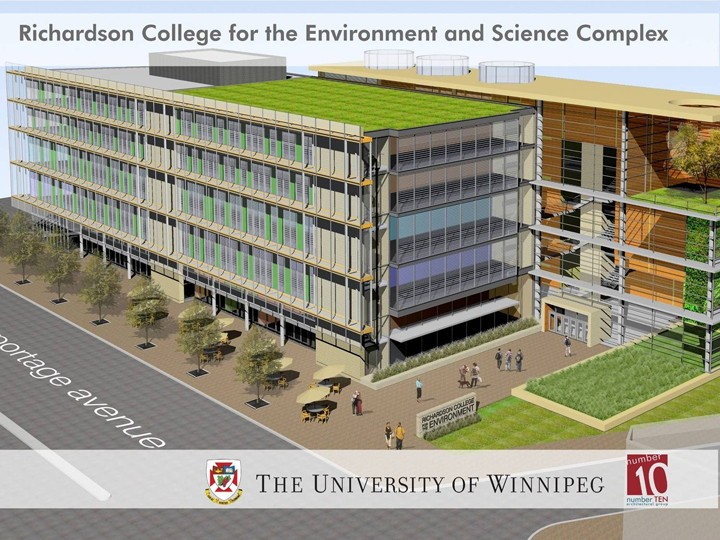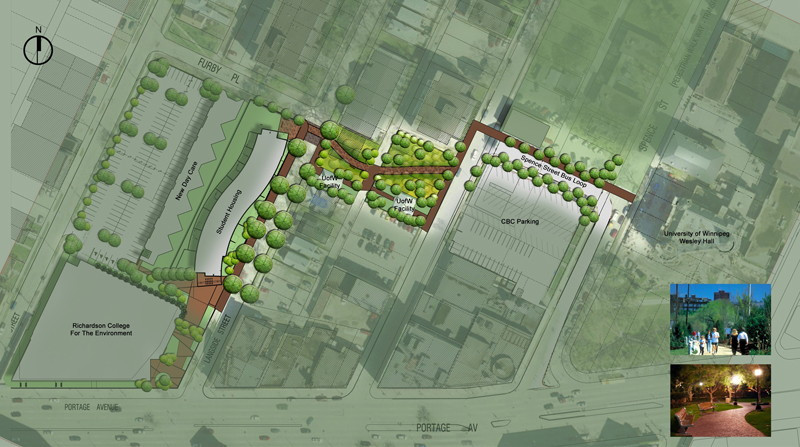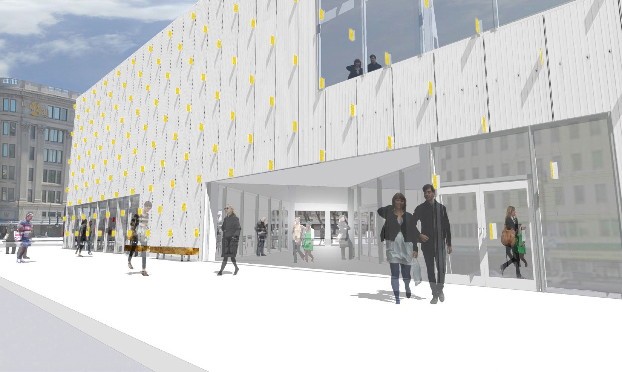New facilities, same struggles
Capital projects excite many, but operational funds remain tight
The development of the Spence Street Promenade between Portage and Ellice avenues, a greenspace equipped with a bandstand and basketball court, will be ready for campus use this fall. The promenade, which is funded by a provincial government grant, is the newest of several significant developments that are underway at the university’s main campus.
The current developments are part of the Campus Development Plan, released in September of 2007, with the goal of creating a sustainable, modern and integrated campus in Winnipeg’s downtown. The initiatives are supported by the Winnipeg Partnership Agreement, involving the City of Winnipeg as well as the provincial and federal governments.
The funding for the Campus Development Plan comes from the University’s Capital Projects Fund which includes fundraising dollars and donations made to the A World of Opportunity Capital Campaign, for the improvement and expansion of University of Winnipeg’s downtown campus.
President and vice-chancellor Lloyd Axworthy explained that by focusing the university’s facilities at the downtown main campus, campus life will improve for existing staff and students.
“We will save money by consolidating our facilities,” he said by phone.
For example, the university will terminate nine off-campus leases and use the funds saved from rental fees to finance resources on the main campus.
And while the new developments will physically be able to accommodate a greater student body and will likely attract new students, some are concerned that the university may not have the operational funds to support an influx of new students, let alone current ones.
Garin Burbank, chair of U of W’s Department of History, explained that his department is feeling the effects of insufficient operating funds for hiring professors for the European and art history programs.
“We are very shorthanded,” he said by phone.
“We have no coherent European history program right now…and we are having great difficulty providing an adequate art history program,” he said, adding that one art history and two European history teaching positions have been left open this year.
Burbank explained that the department’s failure to offer substantial courses in these subject areas has had negative repercussions for students. Many are having difficulty acquiring the required credits in European history that are needed to apply for a major scholarship in European history.
Fourth-year exercise science student Laura Durling said she feels the effects limited course offerings within her department.
“The two classes that I need in order to graduate, Prevention and Care of Sports Injuries and Exercise Physiology, are being offered only once each – at the same time. So I can’t graduate [this year] when I should be graduating,” she said.
Although there has been talk of a hiring freeze due to operating budget pressures, Axworthy said this is not the case.
“There is no freeze on hiring in the faculty or in the staff level,” he said, adding that since January the university has hired 40 new faculty members.
Axworthy explained that vacancy management is a reality in order to balance the operating budget, and that professors will be hired to faculties where student demand is most evident, while less needed positions may be left open in the upcoming academic year.
But Burbank doesn’t think this is the case.
“Both art and European history areas have, in the past, had very strong enrolment,” he said.
“We clearly have demand in the history department for certain areas and those demands are not being met.”
While Burbank credits administration for the impressive execution of the Campus Development Plan and admires the new facilities, the department cannot overlook its lack of fundamental needs.
So while students and faculty can look forward to and enjoy the improvements being made to campus, the effects of budget pressures continue to be felt.
Published in Volume 63, Number 30 of The Uniter (August 13, 2009)









